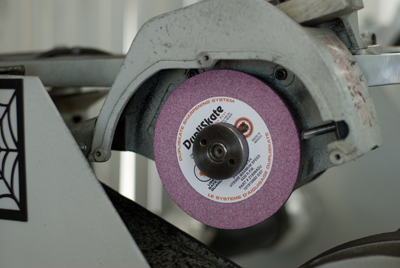Profiling skates – you either consider it a luxury or a necessity. And in some cases, you may think it’s a bad idea due to the original profiling process. Last month, we talked a little about the benefits of profiling when done properly.
We truly believe that a good profile can be one of the best things you can do to improve your performance on the ice.
If you have purchased a new pair of skates or a new set of blades, your skating may have changed. You may feel frustrated that your skating seems worse. Sound familiar?
The best thing is to choose an expert to help decide what is best for you. In our shop, we pride ourselves on looking at all the details, focusing on the customer’s individual needs, and taking quality time.
A customer may come in experiencing the following things:
- Stiffness with the new steel.
- Old blade was so worn out, and so there is trouble adapting to the new one.
- Experiencing difficulty turning, skating backwards, and slow starts, to name a few.
 Every skate blade has a profile and it can be a tricky thing. Between 1960-1980 the process was called “rockering.” During this time, profiling involved ripping a bit off of the toes and heels to allow for a shorter skating surface. It worked but, ultimately, became unstable very quickly because the smaller circle you begin with, the shorter the life of your blade. In no time, you are back at square one needing new steel. Thus, the birth of profiling’s bad rap.
Every skate blade has a profile and it can be a tricky thing. Between 1960-1980 the process was called “rockering.” During this time, profiling involved ripping a bit off of the toes and heels to allow for a shorter skating surface. It worked but, ultimately, became unstable very quickly because the smaller circle you begin with, the shorter the life of your blade. In no time, you are back at square one needing new steel. Thus, the birth of profiling’s bad rap.
Proper profiling does not take off any metal from the toe or the heel. It changes the middle of the skate. Also, a little secret: there is no advantage to taking the toe and heel down as this part of the skate goes the ice. Putting a shim or riser under the heel only tips your body forward, and your blades are still too flat.
But, at our shop, we choose a profile that is suited to your body type, position, and skills while considering the changes you are enduring.
Often, if you have just purchased a new skate, changed to a different brand, or jumped from an old leather model to the new designs you will feel like a two-year old on the ice. Never fear because we can also fix this. You are simply not used to the forward lean, new design, and the blade is long and flat.
The biggest problem is that profiling is truly an art that many shops do not understand and are, therefore, unable to make the right choice for the skater. We also keep records of your skate and profile, so we can re profile if you have gone somewhere else, or get a new skate.
Remember that your skate and blade are the only tools you have.
You will skate as well on a cheaper model with a good fit, proper profile, and sharpening than you will with an expensive pair that does not have a proper profile to suit you. This is especially true for those who are learning to skate and children. Many clients will say, “Oh, he is little. He does not know the difference.” Profiling is most important for children as they begin to explore how they move on the ice – proper form, balance, and developing strong support.
There are a few other things that a custom profile will help with, as well. To hear those bits of magic, you will have to come by and talk with us. We can’t give away all of our secrets. But we can promise that when you stop in to the shop we will be ready and happy to measure your profile and help you decide what is best for you.
Our goal is to make your time on the ice as smooth as possible.




Recent Comments